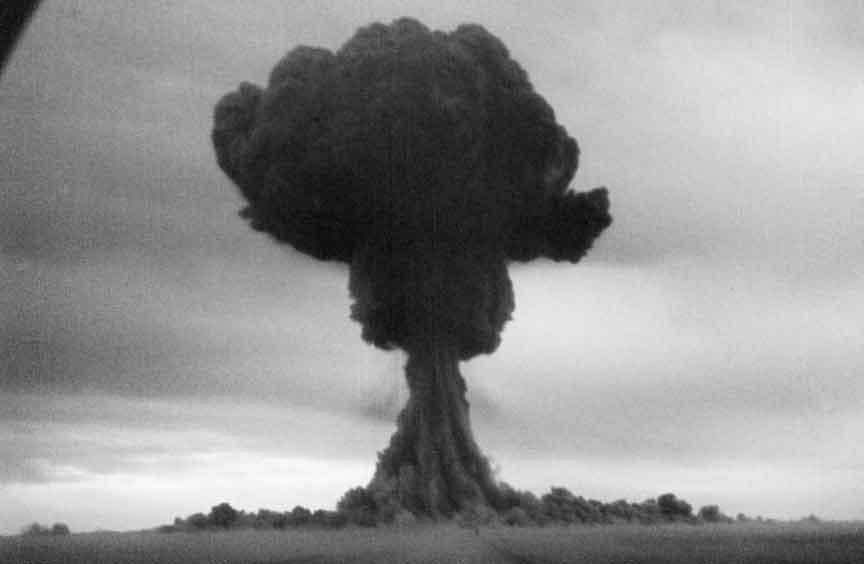1949-Soviet A Bomb

Soviet Bomb
The Soviets had began nuclear research as far back as 1939. Once the US had exploded its bombs over Japan the Soviets intensified their work. The Soviets were aided by spy rings in both the US and Great Britain. On August 29th 1949 the Soviets exploded their first atomic bomb at Semipalatinsk in Kazakh. President Truman announced on September 24 the information on the explosion.
Soviet scientists investigated the possibilities of atomic energy and the possibilities of creating a bomb. At the outbreak of World War II, the Soviet government launched a project to build a bomb. However, the initial setbacks during the war made it a low priority. Several Soviet scientists wrote Stalin and warned him of the dangers of a potential Atomic bomb and what it would mean if the Soviet Union did not pursue it. As a result, Stalin pushed for a renewed effort to accelerate research on the project. However, it was not until the US bombed Hiroshima and Nagasaki that Stalin fully understood the implications and began a crash program to develop a Soviet bomb. On August 22, 1945, Stalin appointed Lavrentiy Beria, the head of the Security Services (KGB), to head the program. Beria mobilized the Soviet scientific community and used the Soviet's extensive spying network to spur the Soviet program forward. Beria also used German scientists captured at the end of World War II who were forced to work for the Soviets.
The Soviets were able to obtain many of the specifications of the American Plutonium bomb. They were able to build their first nuclear reactor completed in October 1945.
The Soviets had received detailed plans for the Plutonium-based bomb that was dropped on Nagasaki ( the US had two parallel plans working to develop the bomb), and thus the Soviets built a bomb very similar to that US bomb.
On August 29, 1949, the Soviets exploded their first bomb at the Semipalatinsk Test Site in Kazakhstan.
Nine days later, a specially equipped B-29 aircraft flying over the Northern Pacific detected radioactive readings. On September 9, President Truman was notified of the discovery. Members of the Truman Administration, including Truman himself, were very skeptical that the Soviets could already have the bomb. A panel of experts was convened to examine the evidence and determine if the Soviets actually had the bomb or not. Leading the panel was Vannevar Bush, President Truman's science advisor. On the panel was J Robert Oppenheimer, considered the Father of the American bomb. The committee met for five hours on the morning of September 19. They reported to the White House that the evidence was overwhelming that it was an Atomic bomb. Truman held back for three days before announcing the fact. The American monopoly on Atomic weapons had ended.
 >
>